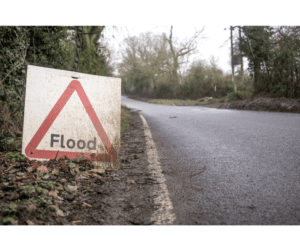As the effects of climate change become increasingly apparent, the risk of extreme weather events, including floods, is on the rise. For apartment dwellers, the threat of flooding brings unique challenges and considerations. In this article, we explore the crucial topic of flood insurance for apartments, shedding light on why it’s essential, what it covers, and how renters and landlords can navigate this often overlooked aspect of risk management.
Understanding the Risks
Apartments, nestled in urban landscapes and often situated in flood-prone areas, are not immune to the devastating impact of floods. Whether it’s a burst pipe, heavy rainfall, storm surge, or flash flood, the potential for water damage is a constant concern for both tenants and property owners. Unlike homeowners who may have a greater sense of control over their property, apartment dwellers must rely on the decisions and actions of their landlords to ensure the safety of their homes.
 The Role of Flood Insurance
The Role of Flood Insurance
Flood insurance serves as a financial safety net, offering protection against the costly aftermath of flooding. However, it’s crucial to note that standard renter’s insurance policies typically do not cover flood damage. This leaves apartment residents vulnerable to significant financial losses if their belongings are damaged or destroyed by a flood. To address this gap, obtaining a separate flood insurance for apartment renters is essential.
Key Components of Flood Insurance for Apartments
- Contents Coverage: One of the primary components of flood insurance for apartments is contents coverage. This protects personal belongings within the apartment, such as furniture, electronics, clothing, and other valuables. Without this coverage, renters would have to bear the financial burden of replacing these items out of pocket in the event of a flood.
- Building Coverage: Landlords or property owners are responsible for obtaining building coverage, which safeguards the structure of the apartment building itself. This includes the foundation, walls, floors, ceilings, built-in appliances, and electrical and plumbing systems. Having building coverage is crucial for property owners to facilitate the necessary repairs and restoration in the aftermath of a flood.
- Additional Living Expenses (ALE) Coverage: Flood insurance may also include coverage for additional living expenses (ALE). This aspect is particularly relevant for renters who may need to relocate temporarily if their apartment becomes uninhabitable due to flood damage. ALE coverage can help with the costs of alternative accommodation, meals, and other related expenses during the displacement.
- High-Risk Areas and Mandatory Coverage: In certain flood-prone areas, especially those designated as high-risk zones by the Federal Emergency Management Agency (FEMA), flood insurance may be mandatory. Landlords with properties in these regions must ensure they have adequate coverage to protect their investment and comply with local regulations.
Navigating the Process for Apartment Dwellers
- Communication with Landlords: Renters should proactively communicate with their landlords about flood insurance for apartment coverage. It’s essential to confirm whether the property is insured against floods and, if not, discuss the possibility of obtaining coverage. Landlords, in turn, should be transparent about the existing insurance policies and the extent of coverage.
- Assessment of Risks: Both landlords and tenants should conduct a thorough assessment of the flood risks associated with the apartment’s location. Understanding the specific vulnerabilities of the area can help in determining the appropriate level of coverage needed.
- Choosing the Right Policy: When opting for flood insurance, it’s crucial to choose the right policy that aligns with the unique needs of apartment living. Tenants should consider contents coverage to protect personal belongings, while landlords must prioritize building coverage to safeguard the property structure.
- FEMA’s National Flood Insurance Program (NFIP): The National Flood Insurance Program (NFIP), managed by FEMA, is a valuable resource for both landlords and renters. NFIP offers flood insurance policies with standardized coverage, making it easier to navigate the complexities of flood insurance.
- Private Flood Insurance: Over the past couple of years more private insurance companies have come to the marketplace offering flood insurance. This is beneficial for obtaining flood insurance for apartment dwellers because of additional options. Private flood insurers often offer lower rates and more coverage options.
Conclusion
In the face of a changing climate and increased flood risks, securing adequate insurance coverage is a non-negotiable aspect of responsible apartment living. Both landlords and tenants play crucial roles in ensuring that their homes are protected from the financial devastation that flooding can bring. By understanding the risks, communicating effectively, and selecting the right insurance policies, apartment dwellers can navigate the waters of flood protection with confidence and peace of mind.



